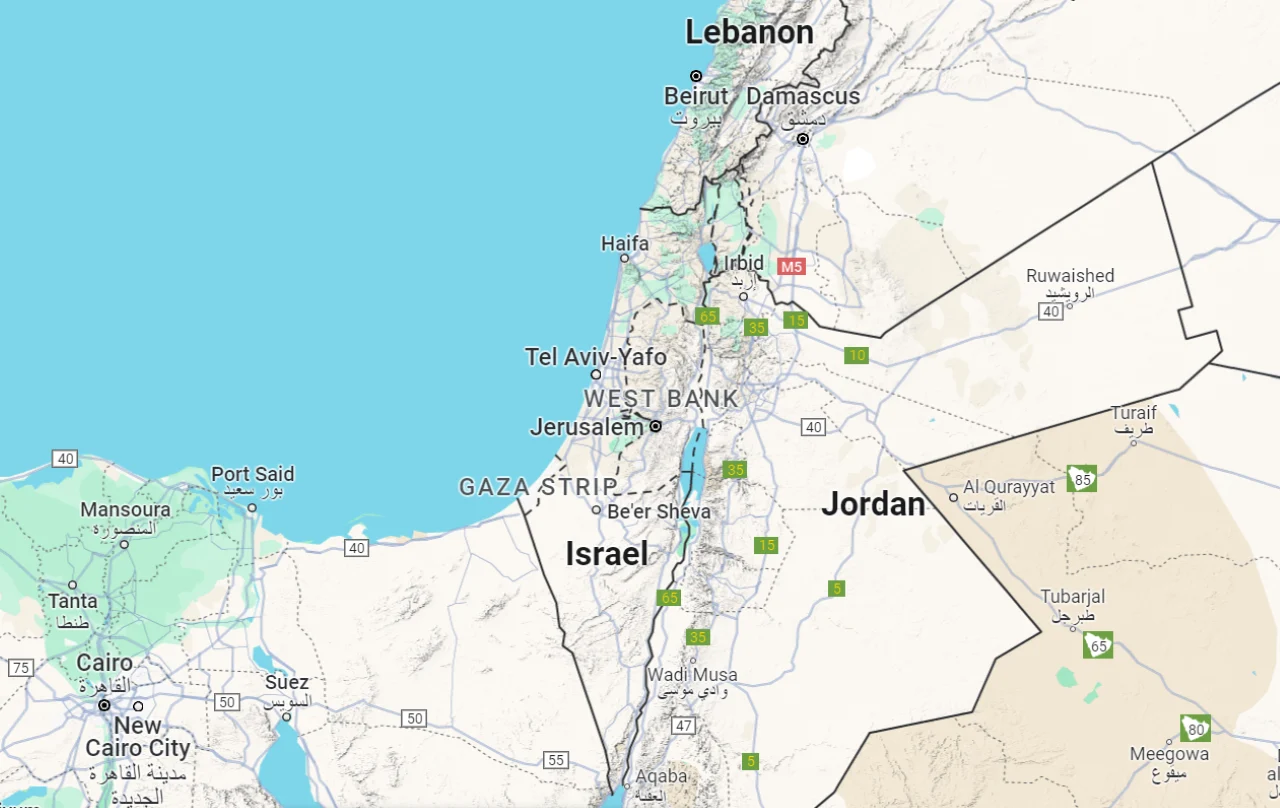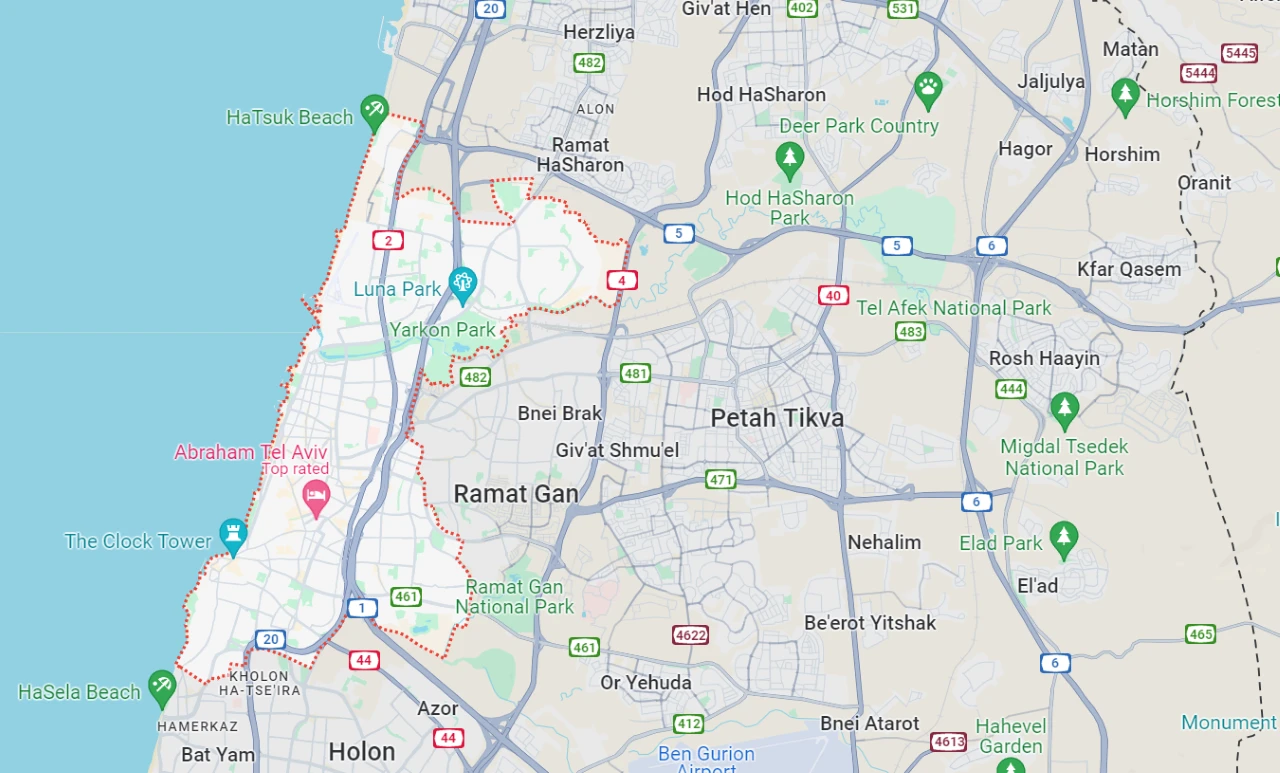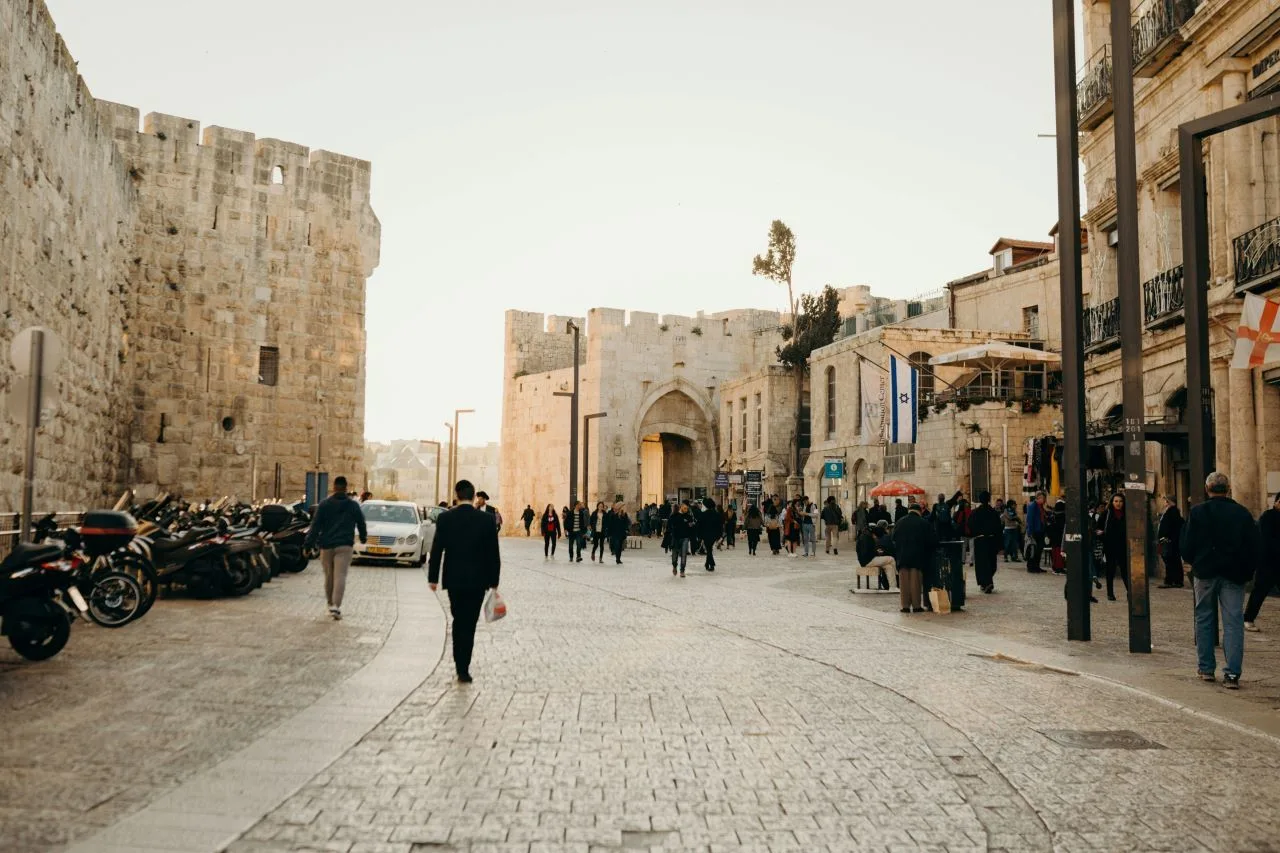Come along as we take a closer look at the map of Israel. It’s like peeling back layers of a storybook, revealing tales from thousands of years ago to the challenges of today. From ancient times to modern struggles, Israel’s map is full of history and politics.
As you explore this small but significant nation located in the heart of the Middle East, you’ll uncover the unique position it holds, both geographically and politically.
Let’s dive in and discover what makes this small country in the Middle East so fascinating.
Israel’s Central Location
In a really important spot where Asia, Africa, and Europe meet, Israel lies, making it a significant place because it connects different regions, letting people trade and share cultures.
You see, it’s like a bridge between continents, connecting Asia, Africa, and Europe. With neighbors like Jordan and Syria to the east, Israel has a unique position that brings both opportunities and challenges.
Its coastline along the Mediterranean Sea adds to its significance, providing access to trade routes and international waters.
Being in such a central location means Israel is always at the center of things, influencing and being influenced by its surroundings.

Discovering Israel’s Diverse Geography
As you journey across Israel, you’ll find a diverse landscape that mirrors its rich history and culture.
Along the Mediterranean coast, the fertile plains of Sharon captivate with their lush greenery and vibrant agricultural fields.
Travel inland to the rolling hills of the Galilee, where picturesque valleys and olive groves paint a serene picture.
To the south, the vast area of the Negev Desert stretches before you, its rugged terrain and ancient canyons offer a glimpse into the country’s arid beauty.
As you travel eastward, the Jordan Valley unfolds, bordered by the towering peaks of the Judean and Samarian mountain ranges.
While Israel’s size may be small, its diverse geography promises an adventure filled with captivating landscapes and the discovery of hidden gems awaiting your discovery.
Israel’s Vibrant Cities

As you explore Israel’s major cities, you’ll find a captivating blend of history, culture, and modernity.
Jerusalem, the timeless capital, will mesmerize you with its ancient landmarks like the Western Wall and the Dome of the Rock, steeped in religious significance.
Here you can wander through the maze-like streets of the Jewish Quarter, marvel at the majestic Dome of the Rock in the Muslim Quarter, and find peace at the Western Wall, a powerful symbol of Jewish perseverance.
In Tel Aviv, you’ll experience the vibrant energy of a city that never sleeps, with its bustling nightlife, beautiful beaches, and thriving arts scene.
You can also walk along the lively boulevards lined with Bauhaus buildings, or soak up the sun on the sandy shores of the Mediterranean.
For a change of pace, travel north to Haifa, a city of contrasts located between the sea and the slopes of Mount Carmel.
Explore the tranquil beauty of the Baha’i Gardens, wander through the bustling port, and savor the diverse culinary delights of its multicultural population.
In the south, cities like Beersheba and Ashdod reveal the country’s ancient roots alongside modern development.
And up north, the historic gems Acre and Safed are located. Here you’ll find ancient alleys and historic landmarks that whisper tales of bygone eras.
Each city in Israel offers a unique blend of past and present, inviting you to explore its streets, squares, and hidden corners.

Israel’s Diverse Attractions
Israel boasts a plethora of tourist attractions that cater to a wide range of interests and preferences.
You can begin your journey from Jerusalem, where ancient history comes to life amidst the winding streets of the Old City, home to iconic sites such as the Western Wall, the Church of the Holy Sepulchre, and the Dome of the Rock.
Then explore the vibrant cultural scene of Tel Aviv, where golden beaches, bustling markets, and world-class museums await.
And if you like nature, the breathtaking landscapes of the Dead Sea, Masada, and the Negev Desert offer opportunities for hiking, relaxation, and stargazing under the desert sky.
Also, don’t miss the opportunity to explore the historic city of Acre, with its well-preserved Crusader ruins and vibrant marketplaces, or to float effortlessly in the mineral-rich waters of the Dead Sea.
With its rich history, diverse landscapes, and vibrant culture, Israel offers a truly unforgettable experience for travelers from around the world.
Location of Major Landmarks
Here’s a table listing some notable landmarks in Israel along with their locations:
| Landmark | Location |
|---|---|
| Western Wall | Jerusalem, Old City |
| Dome of the Rock | Jerusalem, Old City |
| Church of the Holy Sepulchre | Jerusalem, Old City |
| Baha’i Gardens | Haifa, on the slopes of Mount Carmel |
| Masada | Southern Israel, near the Dead Sea |
| Dead Sea | Southern Israel, along the eastern border |
| Sea of Galilee | Northern Israel, in the Galilee region |
| Mount Carmel | Northern Israel, near Haifa |
| Acre Citadel | Acre, Northern Israel |
| Safed Old City | Safed, Northern Israel |
| Caesarea | Coastal Plain, between Tel Aviv and Haifa |
This table gives an overview of the locations of some major landmarks in Israel.
FAQs
Where is Israel located geographically?
Israel is located in the Middle East, bordered by Lebanon to the north, Syria to the northeast, Jordan to the east, and Egypt to the southwest. It also has a coastline along the eastern Mediterranean Sea to the west.
What is the terrain like in Israel?
Israel’s terrain varies widely, encompassing coastal plains along the Mediterranean Sea, mountainous regions such as the Judean and Samarian mountain ranges, and the arid expanse of the Negev Desert in the south.
Additionally, the country features the fertile valleys of the Galilee and the Jordan River, as well as the unique landscape of the Dead Sea, the lowest point on Earth.
Can I visit religious sites in Israel?
Yes, many religious sites in Israel are open to visitors, including the Western Wall, the Church of the Holy Sepulchre, the Dome of the Rock, and the Sea of Galilee. However, it’s essential to dress modestly and respect the religious customs and traditions of each site.
What are some must-visit tourist attractions in Israel?
Some must-visit attractions in Israel include the Old City of Jerusalem, the Dead Sea, Masada, Tel Aviv’s beaches, the Sea of Galilee, and the ancient city of Acre.
Conclusion
- Israel is a nation steeped in history, culture, and natural beauty.
- From the ancient streets of Jerusalem to the modern beaches of Tel Aviv, and from the tranquil shores of the Sea of Galilee to the rugged landscapes of the Negev Desert, Israel offers a diverse range of experiences for travelers to explore.
- Its wide range of attractions, including religious sites, historical landmarks, and natural wonders, make it a captivating destination for visitors from around the world.
- Whether you’re interested in ancient history, want to immerse yourself in vibrant cultural experiences, or simply relax on a sun-soaked beach, Israel has something to offer for everyone.
- So, come and discover the magic of Israel for yourself, where the past meets the present, and every corner tells a story waiting to be explored.

